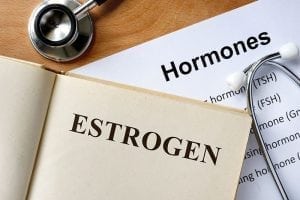A number of factors contribute to infertility and even miscarriages. Low estradiol levels are among them. Estradiol is produced by the ovaries and determines whether eggs become available to be fertilized. Significant amounts of estradiol are found to be directly related to embryo size and development during the first 12 weeks of a pregnancy.
How do low estradiol levels cause infertility?
A quick biological and anatomical breakdown: Estrogen is the major reproductive hormone in women and estradiol is an important component of this hormone. The ovarian follicle is a part of the ovarian structure and eggs are cells that mature within the inner walls of the follicles. The follicles contain an assortment of cells that produce the estradiol needed for the egg to develop and mature. Lower levels of estradiol and the estrogen hormone can affect infertility by preventing ovulation and thus prohibiting the lining of the uterus to thicken enough for the fertilized eggs to implant.
Why might estradiol levels be low?
Female fertility is related to nutritional status. Women with very low or very high body fat have significantly lower levels of this important fertility hormone. Adaptation of a low-fat diet, such as certain types of vegetarianism, can have a depleting effect on a reproductive hormone such as estradiol. Eating disorders, such as anorexia nervosa, may have a significant impact upon estradiol levels as well, as body fat becomes severely lowered with this disorder. Women who adopt very strenuous exercise programs will also see their estrogen levels decrease in a short time. It is because of this that athletes are particularly at risk, as these women may even experience the cessation of menstrual cycles, known as amenorrhea. In addition, the use of alcohol or caffeine may also have a negative impact on fertility as well.
Treatment for low fertility due to low estrogen levels.

Lifestyle changes are a good place to start naturally treating low estrogen levels, in addition to learning the ovulation cycle and planning intercourse around that time. Maintaining or achieving a healthy weight through proper diet and exercise are significant factors in achieving a pregnancy, as well as the proper management of stress.
The links between hormonal levels and fertility are very intricate, and the assistance of a fertility clinic is an option. If lifestyle changes result in no change in estrogen levels, many individuals turn to hormone replacement therapy.
How might estradiol levels contribute to miscarriage?
In a study of primate miscarriage in which estrogen was suppressed during the pregnancies, only 45 percent of the animals carried to term. The rest of the animals miscarried fetuses that had died before the miscarriage itself.
Eugene D. Albrecht, PHD, professor of reproductive sciences at the University of Maryland School of Medicine reports, “Our findings indicate that estrogen plays a critically important physiological role in the maintenance of pregnancy and in fetal viability.”
Serum estradiol levels are related to embryonic growth within the first 12 gestational weeks of a pregnancy. These levels have a direct correspondence with the size of the embryo during these critical weeks. If estradiol proves to be low, supplementation of proper levels is crucial.
Miscarriage research reports that “Estradiol alone prevented the high rate of miscarriage induced by the anti-estrogenic agent CGS 20267.”
Review of the findings from these sources and others show that proper estradiol serum levels are significant for initial fertility and to carry a healthy fetus to term.





